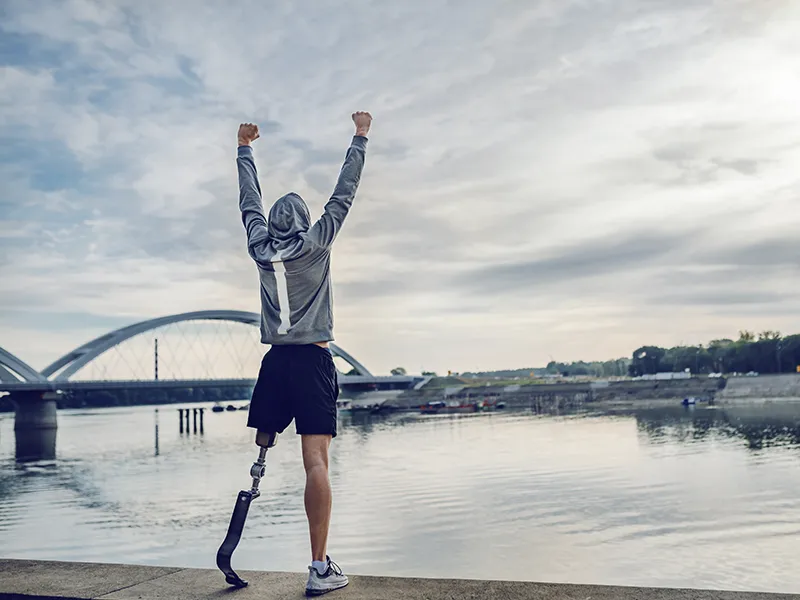
What to Expect During Your Adjustment Phase
Adjusting to a new prosthetic is a process that unfolds over time, with each phase bringing its own challenges and progress. Here’s what you can expect:
Initial Weeks
The first few weeks are about getting used to the feel of your prosthetic. It’s normal to experience some initial discomfort or soreness as your body adapts to the device. This is the period to ensure proper fit and alignment with the help of your prosthetist.
1-3 Months
This phase often involves physical therapy, which helps you build strength and balance. You’ll work on basic movements like standing, walking, and performing daily tasks. Slowly, these activities will feel more natural as you gain confidence with your prosthetic.
Beyond 3 Months
After three months, you may feel more comfortable and fluid in your movements. The prosthetic becomes a part of everyday life. However, you may still need ongoing adjustments to account for changes in your activity levels or physical condition.
Factors Influencing Your Adjustment Period
Several factors can influence how quickly you adapt to a new prosthetic. Understanding these elements can provide clarity and help set realistic expectations for your adjustment period:
Type of Prosthetic
The type of prosthetic you use impacts the timeline. For example, lower-limb prosthetics may take longer to adjust to due to their role in walking and balance. On the other hand, prosthetics with advanced features might also require additional time to master.
General Health
Residual limb healing plays a critical role early on. Your body’s strength and overall health can also affect how quickly you adapt. Keeping your residual limb in good condition is essential for progress.
Activity Levels
Your daily activity level will influence how quickly you adjust to the new prosthetic. If you stay active, you may adapt faster due to regular use, while a more sedentary lifestyle could lead to a longer adjustment period.
Tips for a Smoother Transition
Making the adjustment to a prosthetic is easier with the right support and habits. Here are 3 practical tips to help you through the process:
- Stick to a Consistent Plan: Regular physical therapy builds strength and boosts progress over time.
- Care for Your Prosthetic: Clean it often and check for wear to maintain comfort and function.
- Stay Proactive with Follow-Ups: Visit your prosthetist to refine the fit and celebrate milestones!
Moving Forward with Confidence at Unified Medical Equipment Solutions
At Unified Medical Equipment Solutions, we understand that adjusting to a new prosthetic takes time and care. That’s why we’re here to guide you, offering personalized support tailored to your mobility needs. Whether you need a transtibial prosthetic to support everyday movement or a transfemoral prosthetic designed for stability and strength, we craft each device with the goal of improving your life.
Our focus is on helping you regain your independence and live fully. From residual limb preparation to customized fittings and ongoing support, we’re here for you. Get in touch with our team to learn more about how we can help.
